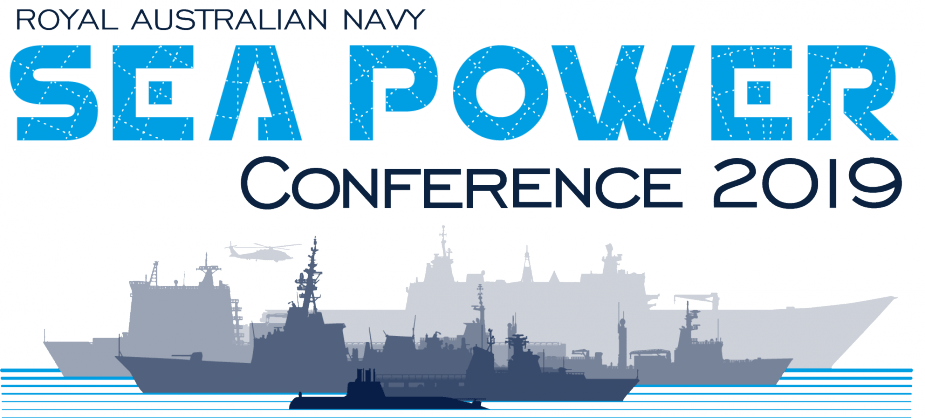By Robbin Laird
Recently, I attended the Chief of the Royal Australian Navy’s Seapower conference being held in Sydney from October 8th through the 10th, 2019.
The conference provided insights into two major questions: What is the development trajectory of the Royal Australian Navy over the decade ahead? And what is the evolving strategic context within which those developments will have their meaning and impact?
The first question was addressed largely from the standpoint of the impact of “the continuous shipbuilding approach” on Australia seen as a nation, with infrastructure, and sustainment approaches widening the impact of the navy upon the Australian navy and society.
In my view, this recalled the importance of Vice Admiral Barrett’s book on the Navy and the Nation which was published when he was Chief of Navy. This clearly is more than a whole of government approach; this is a whole of economy and society approach.
For this to succeed, the nation will have to understand why this is being done.
A large part of that answer will come in the national debate about the direct defense of Australia in the changing strategic context.
As Australia engages in shaping its role in the changing global dynamics of the 2020’s, a key challenge is to determine how best to protect its sovereignty with the rise of the 21st century authoritarianism and how to deal with the end, at least in its current form, of the American generated and sustained order or what the Aussies call the “rules-based order.”
The 21st century authoritarian powers are clearly focused on changing the rules of the game let alone the rules-based order. Although the United States clearly is a key ally of Australia and the dominant liberal democratic military power, that relationship clearly is not enough to sort through how best to protect Australian sovereignty.
A key part of that change will be the centrality for Australia of their region, and reshaping Australia’s role within the Into-Pacific.
One panel at the conference was asked to address the question of what the Info-Pacific region would look like in five years and what might be the implications of that forecast for Australian defense and security.
I was quite struck by one analyst’s approach to answering the question.
Dr. Stephen Fruehling answered the question by taking us forward to 2024 and asking what questions would the Seapower conference in 2024 be focused upon.
Dr. Fruehling’s presentation follows along with the questions which he posed along this line.
We’re asked to look about 5 years out on strategic developments in the Indo-Pacific, and I’ll focus my remarks on what I think how Australian strategic policy could and should develop over that time, and what this might mean for Navy
I listened with particular interest to the presentations by the minister, the Chief of Navy and his fellow chiefs on Tuesday.
If one compares the debate today to that of just three or four years ago, just before the 2016 White Paper, it is easy to forget how much progress we have made: The notion that a program of continuous shipbuilding is the basis for Australia’s ability to develop and grow its maritime power for the Indo-Pacific area in the 21st century has become almost uncontested within those short few years.
And the focus on Indo-Pacific Partnerships as a key element of Australia’s defence engagement and policy in general, and the major focus for Navy’s operational forward presence, gives some strong support to the notion that Defence is really becoming a strategy-led organization.
Because of the nature of what they do, it is almost inevitable that Navies respond most visibly and directly to such changes – Army and Air Forces change form Kamarians to Musorians and back again, but few will notice outside and even inside those services. Navies are different, since the question of where to go once you leave port is kind of hard to avoid, and it is thus not surprising that developing ‘Partnerships’ in the Indo-pacific has become so central to the RAN today.
Moreover, naval platforms also tend to most visibly change, admittedly with a lag, to changes in strategy – the ‘500’ vs ‘600’ ship navy were as shorthand for US maritime strategy debates in the 1980s; the almost totemic importance of carrier numbers for forward presence US defence debates of the 1990s; or the association of the ‘littoral combat ship’ with Donald Rumpsfeld’s ideas of ‘transformation’. Even in Australia, the decision not to replace the carrier, and the definition of the original ANZAC capability for Southeast Asian, not Northern hemisphere requirements have little parallel in the other services.
The problem though if we look to the Indo-Pacific for the next five years is what is that Australian strategy that the Navy is supporting and developed for?

This is one of the key questions that Defence will need to confront in the current review, because the answer isn’t in the 2016 White Paper.
Back in the olden days of the 1950s and 1960s, Australia conceived of not one but three related strategies—for Cold War, we might call it competition these days; for limited war; and for global war.
Partnerships are important in all three regards, but the demands that they place on different elements of the Navy, the ADF as a whole, its national support infrastructure and its alliances are quite different.
Ultimately, to govern means to choose. and in the past Australian governments at times prioritized capabilities for Cold War operations, sometimes for situations of limited war. We are not alone in this: On Tuesday, Admiral Aquilino spoke of the need to strike a balance between preparing to fight and win, and operating forward to deter. Admiral Prazuck also spoke of the need to constantly evaluate the balance between presence and intervention, heavy and light forces. But how to do so is a question that our strategic policy still has to come to terms with.
What would I hope to see in the discussions at Seapower 2024, five years from now, to show that we have done so?
A greater understanding at the defence, industry and political level of how the national shipbuilding system and the RAN’s growing role as a parent Navy enable us to adjust our force structure more rapidly than might otherwise be the case to changing strategic needs in our own part of the Indo-Pacific would be a start; combined with a clearer articulation and discussion of the different roles that different parts of the Navy might play in competition, limited and global war, and the trade-offs between them.
If we prioritize capabilities for global rather than limited war, how can we use this shipbuilding enterprise for battle damage repair, and what parts of it and our wider naval infrastructure on shore do we need to defend against cruise missile and other attack?
If you slap a towed array onto an OPV and use it as a helicopter lilipad, you may well have all you need to protect the Indian Ocean and Pacific SLOC that we would need for resupply with essential war stocks and fuels during global war. Could they train to sufficient proficiency though if they’re busy surveying South Pacific EEZs?
How would we make use of industry, capacity building, and shore-based activities to step up partnerships in the maritime domain, if we were to spend more days at sea honing Navy for high-end warfighting—or there are simply not enough ships around for what we think we need to achieve?
Hence, besides greater engagement with the necessary trade-offs, the question of what is the strategic role of forward-presence is a second, major question for the next five years. Partnerships can help build capacity for a small force, as the Vice Chief said on Tuesday, but that just begs the question of capacity for what? Where we can use partnerships to help regional countries fulfil their own objectives in the maritime domain they may help us be successful in strategic competition.
In regards to limited war, though, how would we use them to signal political commitment, to deter and reassure when we’ve never really thought about our forward presence in those terms, let alone how we might need to operate forward operationally and in a pol-mil sense as we transition from competition to crisis to conflict and war?
If you go to the European context, for example NATO allies have Standing Naval Forces that can be used for signalling and demonstrating resolve in a crisis, in a way that we and our US allies have never developed in the Indo-Pacific. This is not to say we need a standing arrangement, but nor can we expect to make up solutions to the political-military challenges of successful signalling as a crisis unfolds. Euan Graham’s discussion of the new marine corps guidance though highlights, forward presence for actual operations would look very different again from that we might maintain in steady-state competition.
But if we decide that the strategic purpose of our forward presence is to reassure our regional partners that we have their back, does that mean we have to be comfortable with that presence staying there throughout a crisis and into conflict, and perhaps not coming back?
If the discussions at Seapower in five years time will reflect answers to these questions in the way that this years’ discussions have responded to the 2016 White Paper direction, Defence, Navy and Australia as a whole will be well on our way to manage the challenges the region throws at us.
See also, the following:
Australian Strategy at a Turning Point: Implications for the United States


